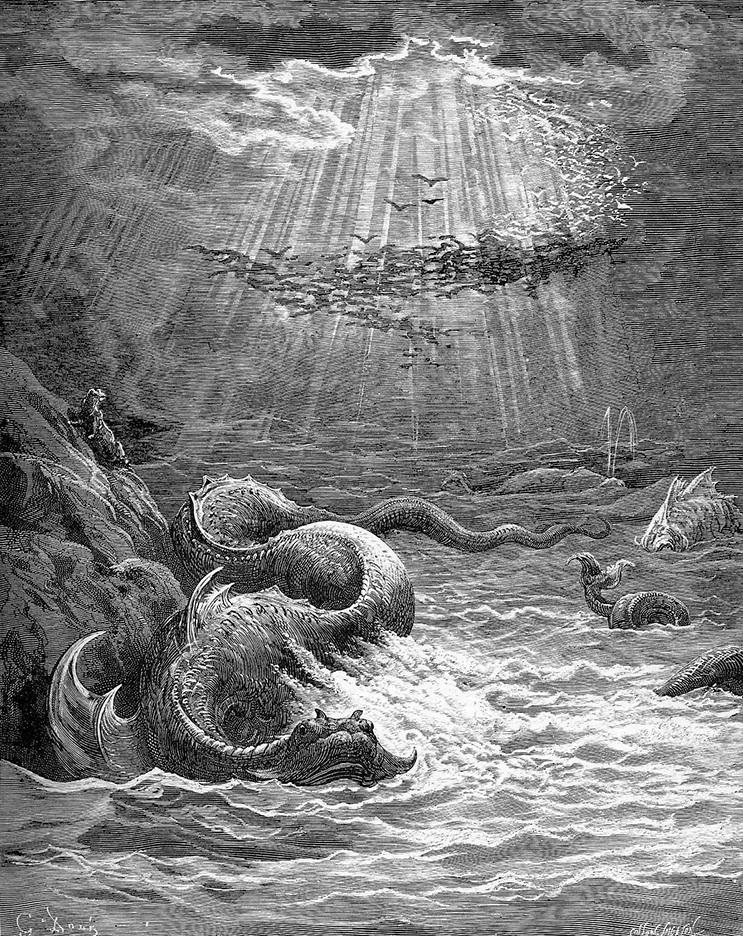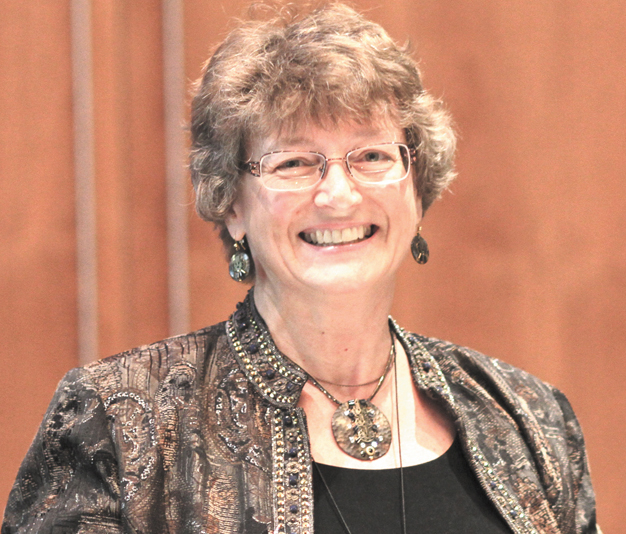Seas and skies

Considering Creation series
Jewish Family Education with Candace R. Kwiatek
Nothing can convey the rich diversity of creatures in the seas and skies quite like swimming in the Gulf of Mexico alongside a languorous whale shark the length of a standard school bus. And then glimpsing a thumb-sized ruby-throated hummingbird with its frenzied wings ablur as it flits through the garden.
Or consider the sponge, a sea animal that has no head, mouth, eyes, feelers, bones, heart, lungs or brain. Or the female codfish, which can lay nine million eggs in a year. Or the arctic tern that annually migrates from pole to pole, a 56,000 mile round trip. Or the vulture, whose stomach acid is so corrosive it can digest carcasses infected with anthrax.
As Creation progresses from flora to fauna, the world becomes infinitely more complex. By the fifth day, Earth’s infrastructure is complete and its biosphere is in place: solar bodies for light, heat, and energy; an oxygen-rich atmosphere; a self-sustaining water cycle; three major habitats; and vegetation ready to support more advanced life.
God said, “Let the waters swarm with a swarm of living creatures, and let fowl fly above the earth, across the expanse of the sky!” God created the great sea serpents and all the living creatures of every kind that creep, with which the waters swarmed, and all winged fowl after their kind. And God saw that this was good. God blessed them, saying, “Be fertile and increase, fill the waters in the seas, and let the fowl increase on the earth! And there was evening, and there was morning, a fifth day (Gen. 1:20-23 JPS, with modifications from Everett Fox’s translation).
Creation makes a quantum leap on the fifth day. It introduces living creatures to the waters below and above, reprises the Hebrew word bara, create, and adds a blessing.
At the same time it hints at future discoveries in science and reduces the great ruling sea serpents of ancient mythologies to ordinary animals of the deep.
Day five opens with a majestic overview of Earth’s waters filled with remarkable animate beings that, unlike the earlier vegetation, contain a living soul, a nefesh chayah. Wholly unprecedented, these living beings represent a radically new stage of Creation.
This novelty is captured by the Hebrew word bara, as in “God created” or “God introduced an absolutely new thing,” dormant since the first verse of Genesis.
All these living creatures, according to the text, are the result of God’s creative command, not spontaneous generation from the divine waters as in ancient Near Eastern mythologies.

Explicitly singled out in the text as God’s creations are the sea serpents — in Hebrew, tannin — expressly for the purpose of stripping them of their ancient mythological divinity, according to some commentators.
However, tannin also has the meaning of “stretched” or “elongated” which, together with notions of creeping and swarming, embraces aquatic creatures such as crocodiles, sea turtles, frogs and salamanders.
Thus, the biblical narrative begins to look less disjointed and much more like the familiar evolutionary story.
Painted with very broad brushstrokes, the sequence of animal development continues with the oph, awkwardly translated as fowl. In biblical Hebrew, oph denotes all flying creatures, not just birds, and includes aquatic flying insects such as mosquitoes and dragonflies, again paralleling the scientific record.
God sees Creation becoming more orderly and diverse, waters swarming with an immense variety of living creatures, and the toppling of ancient mythological divinities, and pronounces it all good.
Then, for the first time ever, God blesses Creation, so the living creatures will be fruitful and multiply and fill the seas and skies.
Here we see a stark difference between the plant and animal kingdoms, notes Rabbi Menachem Leibtag.
“Whereas self-produced seeds allow vegetation to reproduce itself, the animal kingdom requires mating for reproduction, and thus the need for God’s blessing of pru u’rvu (be fertile and increase).”
It’s a double blessing: the blessing of reproducing and carrying on the species, and the blessing of carrying forward God’s creative power.
The diversity and complexity of living creatures just in the waters of earth is breathtaking.
Untold numbers of aquatic animals are yet undiscovered; scientists estimate nearly 90 percent of ocean species aren’t yet classified.
Winged insects are a bit better off, with 20 percent documented to date, and birds are nearly complete.
But that doesn’t mean there’s nothing left to wonder. Some birds navigate by the stars when migrating. In fact, birds raised from eggs inside a building where they have never seen the sky can orient themselves toward home when shown an image of any part of the nighttime sky, and arrive right where and when expected. How do they do that?
How do we navigate? What is our north star?
How can we treat every creature as a nefesh chayah, a living soul?
Do we recognize a transcendent Creator, or make gods out of creation?
When do we recognize and bless the diversity of life in our world?
What do we believe represents God’s creativity in the world? Where do we look for goodness in our world?
What can we learn about navigating from Bereshit, Genesis?
The fifth day of Creation is a quantum leap. Perhaps we could consider taking a single step.
Literature to share
Citizen 865: The Hunt for Hitler’s Hidden Soldiers in America by Debbie Cenziper. Is he just a retired potato chip salesman or a former Nazi? Citizen 865 follows the investigation of Nazi hunters in America’s cities and suburbs seeking to unmask the men of Trawniki, the most lethal operation in the Holocaust during which 1.7 million Jews were murdered in just two summers. Chapters on Poland’s history and the U.S. Nazi investigations alternate, narrated like a novel through key characters in their stories. The storyline is gripping, as are the center photos of key figures and moments in this story.
Such a Library! A Yiddish Folktale Re-Imagined by Jill Ross Nadler. Stevie’s favorite part of the library was the quiet. But soon the page-turning, storytelling, and computer clacking seemed as noisy as a party, so he went to complain. “A party?” said the librarian. “Wonderful idea.” She opened a book and out popped balloons and hats and horns…This cumulative tale, a modern version of the man in his crowded house, is an absolute delight. A wonderful tale for the preschool set.
To read the complete March 2021 Dayton Jewish Observer, click here.


